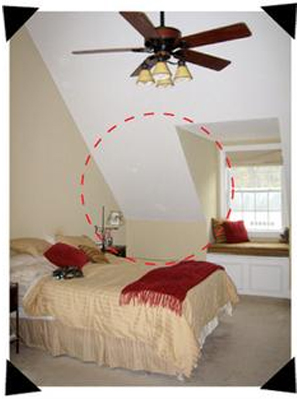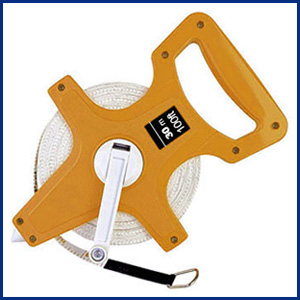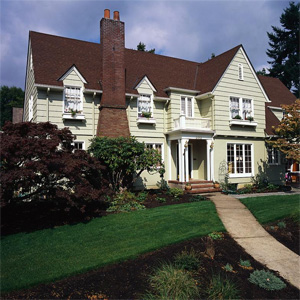Top 10 measurement basics
Measurement Basics – Top Ten List
The following list represents the most often utilized calculations in measuring residential square footage. This list is a brief description and reference guide.
- Finished Space. All space considered as finished square footage should be derived using exterior measurements.
- GLA or Gross Living Area is defined as finished space that is “above grade” only. GLA is the main unit of comparison in every appraisal report.
- GBA or Gross Building Area includes any finished, partially finished, or unfinished areas which are NOT included in the main living area or “GLA” calculations.
- Sloped Ceilings. In rooms with “sloped ceilings,” finished space is measured from the five foot mark on any sloped ceiling/wall, with no addition for the width of the exterior wall.
- Stairs are included within the exterior dimensions (and square footage) of the highest finished level. The sloped space below a staircase is included on the lower level, regardless of the ceiling height.
- Garage. An attached garage measurement begins at the exterior corner and ends at the start or beginning of the interior wall, with no addition for the width of the interior wall.
- Dormer. The width of a dormer equals interior measurements plus the addition of both exterior walls. The length measurement equals the actual length from the inside corner of the dwelling to the start or beginning of the outside wall with no addition for the thickness of the exterior wall.
- Adjoining Spaces. When an area that is not part of the finished living area (garage, storage space, etc.) shares a common wall with any finished living area, treat the common wall as the exterior wall for the finished living area. Therefore, the measurements for the finished space will include the thickness of any common wall(s) and the measurements for the other area will not.
- Exterior dimensions using interior measurements. To calculate the width of an exterior wall using interior measurements, add five tenths of a foot (or six inches) for each exterior wall (not to exceed actual exterior dimensions.
- Above and below “grade.” No statement of a dwelling’s finished living area should be reported without the distinct separation of above and below grade areas.



Many measurements seem like they would be fairly simple and that most professionals would measure them by the same method. However, that is often NOT the case. Things from measuring stairs and garages, bay windows and enclosed porches, and even dormers can cause the same space to get many different measurement totals. All of which is very bad for consumers. For the largest investment of most people’s lives, consistency in measurements should be a given. Until all professionals measure by the same methods, consumers and home values are at risk. In today’s technology advanced world, home measurement standardization should be required. Consumers deserve it and should demand it. If they knew the true scope of this problem, they would be outraged. Yes, it is often that bad…
Sloped Ceilings. Do you know what’s GLA and what’s not? Ask two agents and two appraisers, and you may get four different answers. “It depends” is NOT something you want to hear when it comes to measuring a home’s square footage, yet it is used daily throughout the industry.
Look for the book “How to Measure a House”. It will make a very good start.

